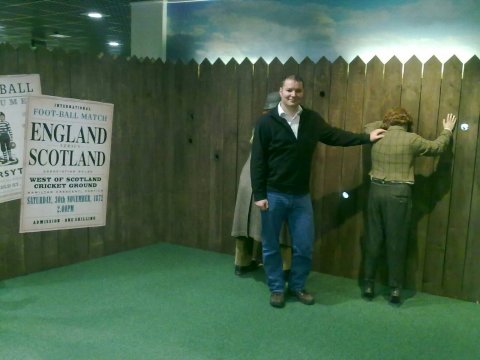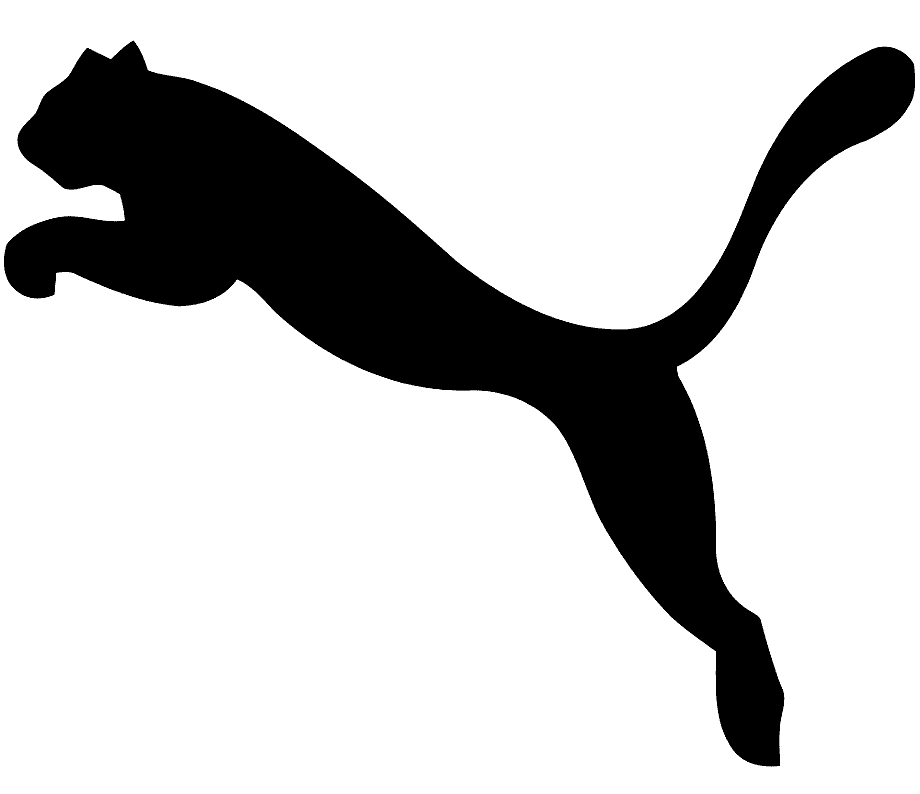Twelve months ago, The Co-operative Insurance League Insider provided an in-depth review of the museum based at Hampden however, the museum has recently undergone a major revamp and the team from the SFL Newsletter popped in to find out what is new. Museum Curator, Richard McBrearty, was again on hand to discuss what has changed and first of all he explained why change was needed.
 He said: “We received Government funding to add and enhance some of our exhibits as in terms of museums and galleries, our collection is deemed to be nationally important.
He said: “We received Government funding to add and enhance some of our exhibits as in terms of museums and galleries, our collection is deemed to be nationally important.
“We wanted to develop the storyline of some of the major items we have in the museum and we have invested in them accordingly.”
The Scottish Football Museum, the first of its kind in the world when it opened its doors in 2001, continues with five sections running in chronological order starting in 1867-1902, before moving onto 1903-1945, which was a boom time in football, with the third section looking at 1967-1979. The fourth section starts in 1967 and ends in 1979 with the final section bringing football up-to-date from its 1980 start point.
The first change to the museum is seen, or rather peered at through a fence, within feet of entering. The wooden fence depicting the scene outside of the first ever international football match in the world, between Scotland and England in 1872 at Hamilton Crescent in Glasgow, has been enhanced to add to the storyline in the manner McBrearty described.
 McBrearty said: “The holes in the fence were previously just for show and visitors would peer into a darkened space however, now visitors will see a serious of sketches from the game that will add to the flavour of the first meeting with the Auld Enemy.
McBrearty said: “The holes in the fence were previously just for show and visitors would peer into a darkened space however, now visitors will see a serious of sketches from the game that will add to the flavour of the first meeting with the Auld Enemy.
“Just for good measure, a ticket from the actual game remains on display.”
The next change visible in the Museum is the most dramatic and heralds the move from the beginnings of the game in an organised fashion to the 1903-1945 era of huge attendances.
McBrearty explains: “We have built an accurate representation of the entrance to the standing areas of Hampden Park for the first game there in October, 1903. It has a corrugated iron front and this has been built from pictures of Hampden from 1903-1909.
“The Hampden riot that resulted in the Scottish Cup being withheld happened in 1909 and the corrugated iron was pulled down and destroyed during it. Pictures after that date show only the brickwork façade around the stadium.”
A poster depicting the first ever League fixture at what was the third Hampden Park, between Queen’s Park and Celtic on 31st October, 1903 is plastered on to the corrugated iron to add to the feeling of the time.
 McBrearty said: “We wanted to give visitors the feeling of queuing up to enter Hampden as it would have been over 100 years ago.
McBrearty said: “We wanted to give visitors the feeling of queuing up to enter Hampden as it would have been over 100 years ago.
“To add to the authenticity, the turnstile comes alive with a metallic click when a visitor goes through and a voice booms out instructions such as ‘Mind your language – the Lord Provost is away to open the Ground.’
“Once again, to show the completeness of the exhibits, the match ball and a ticket from this game is also on display.”
After passing through the turnstile, visitors enter a darkened area at the foot of a virtual stairway that leads to a packed crowd of fans adorning the raincoats of the time standing on the terraces of Hampden.
It was an era of record crowds at football matches in Scotland and the stairway gets illuminated with Pathe News footage from the 1920s to the 1940s showing queues of fans snaking around the Mount Florida ground. Again this has been done to give visitors a sense of what older football fans experienced.
As well as bringing the first ever international game to life and recreating the look and feel of entering a game, an existing post Second World War streetscene of four youngsters kicking a ball about as they practice the skills has been enhanced.
 Again it has been done to add depth to the storyline with the former Arsenal, Leicester City and Scotland defender, Frank McLintock, discussing his memories of playing football as child as does Hibernian and former England internationalist, Joe Baker, Heart of Midlothian, Tottenham Hotspur and Scotland legend, Dave Mackay, and Jim McLean, who played for Hamilton Academical, Clyde, Dundee and Kilmarnock before serving 22 years as the Manager of Dundee United.
Again it has been done to add depth to the storyline with the former Arsenal, Leicester City and Scotland defender, Frank McLintock, discussing his memories of playing football as child as does Hibernian and former England internationalist, Joe Baker, Heart of Midlothian, Tottenham Hotspur and Scotland legend, Dave Mackay, and Jim McLean, who played for Hamilton Academical, Clyde, Dundee and Kilmarnock before serving 22 years as the Manager of Dundee United.
To add to the drama, each famous voice has been allocated a street player and only their figure will light up when they are talking.
McBrearty adds: “It makes it a much more personal exhibit and a lot of our older visitors will remember and visualise what is being discussed by the former players.”
A real star attraction has been added in the third section, the 1967-1979 period although this attraction is more about three wheels than two legged footballers.
McBrearty explains: “We have added an Invacar to the exhibits which we believe is a great attraction for the museum.
“A lot of people will ask why that is there and what is it for and we believe that the picture we have placed behind it says it all in less than a thousand words.”
 Behind the sky blue Invacar is a picture from an Old Firm game with Jimmy Johnstone in the foreground with a huge crowd in the background. In-between there is a row of Invacars and McBrearty believes that this shows the tie up with football without much need for explanation.
Behind the sky blue Invacar is a picture from an Old Firm game with Jimmy Johnstone in the foreground with a huge crowd in the background. In-between there is a row of Invacars and McBrearty believes that this shows the tie up with football without much need for explanation.
The Radio Clyde Sportsound area that has been in situ since 2004 has been removed to make way for the Invacar with McBrearty saying: “It was time for an update and the Invacar is a bit of a star attraction for us because of the role it played in getting fans to games before they stopped being used in the 1970s.”
The next change to the museum marks the departure from just being a football museum into a socially aware research facility with McBrearty saying: “We are heavily involved in a Reminiscence Project and we combined the aims of the project with our Photography Library to create a quiz wall with pictures of over 100 players.
“It is reckoned that using photographs from various decades can help sufferers with dementia as it can help trigger a memory and also it is a lot of fun to guess who the players are.”
Tip – one of the Clyde players is Dom Sullivan!
 Another part of the Reminiscence Project is the ‘Quilt Displays’ which have been produced by quilter Anne Hill in conjunction with the Museum and a University Project researching dementia.
Another part of the Reminiscence Project is the ‘Quilt Displays’ which have been produced by quilter Anne Hill in conjunction with the Museum and a University Project researching dementia.
Amongst the quilts there are three adorned with black and white pictures of players from Falkirk, Hibernian and Aberdeen with McBrearty saying: “These clubs have kicked off reminiscence projects in their area and the work they have done is great. It is a work in progress and there is more to come from this project, probably early next year.
“Hopefully, we can create a national project but of course, it is dependent on funding.”
Turning back to football matters, the Roll of Honour representing players that have played fifty or more times for the national side is now bang up to date.
McBrearty added: “Darren Fletcher and Kenny Miller have been added to the Board following their recent caps and we have portraits of them in Scotland colours as well.”
The adjoining Hall of Fame which was opened in 2004 and revamped three years later is bang up to date as well.
 The six new entrants for 2010 are all included with referee Tom ‘Tiny’ Wharton there along with Craig Brown, who has been on the back pages recently. Also inducted this year were Dundee United legendary defender and scorer of a very famous ‘toe-poke’ goal, David Narey, goalkeeper Andy Goram who served Hibernian, Rangers and Scotland with great distinction, Celtic’s midfield maestro, Paul McStay, and one fifth of Hibernian’s Famous Five forward line, Bobby Johnstone.
The six new entrants for 2010 are all included with referee Tom ‘Tiny’ Wharton there along with Craig Brown, who has been on the back pages recently. Also inducted this year were Dundee United legendary defender and scorer of a very famous ‘toe-poke’ goal, David Narey, goalkeeper Andy Goram who served Hibernian, Rangers and Scotland with great distinction, Celtic’s midfield maestro, Paul McStay, and one fifth of Hibernian’s Famous Five forward line, Bobby Johnstone.
Fans can learn all about their careers in an interactive way at the Hall of Fame including footage.
The actual room that the Hall of Fame is located is better known than you may realise, as it is often used for Cup Draws and Corporate Hospitality (known as the Cumbrae Suite) at big games at Hampden and is now also used for the growing number of Birthday Parties that are held at the National Stadium.
McBrearty said: “This has been the biggest revamp of the Museum since it opened in 2001. We were shut for two weeks and the bad weather affected the schedule of works but everyone rallied round to get us re-opened in time last weekend.
“Football is a huge part of Scottish culture and we firmly believe our collection is one of national importance.
“Come in and see the changes, we believe that football fans will enjoy the experience even more now.”






.png)












